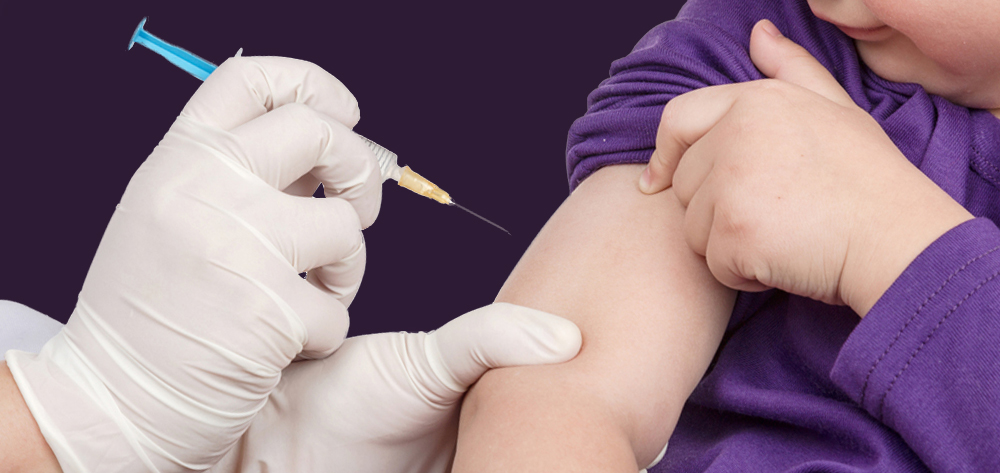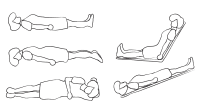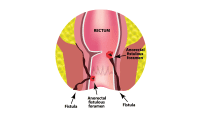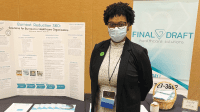Today, many of the diseases that in past decades killed or sickened millions of people across the globe have faded from public memory. Many Americans—even many healthcare providers—don’t know of a single person who has been diagnosed with measles, tetanus, or polio.
In the developed world, vaccines have been so successful at eradicating or controlling disease that their occasional serious adverse effects get more attention than their ability to save lives. Based on reports of vaccine reactions and the spread of unfounded information, anti-vaccine sentiment has been growing, and some parents have refused to get their children immunized. This poses a serious threat that diseases we thought were virtually wiped out could make a comeback.
According to the World Health Organization (WHO), approximately 1.4 million children younger than age 5 died from vaccine-preventable diseases in 2002. The leading causes of death were measles (38%), Haemophilus influenzae type b (Hib) (27%), and pertussis (20%). Others included tetanus (both neonatal and nonneonatal), polio, diphtheria, and yellow fever.
This article discusses major vaccine-preventable diseases, lists current immunization recommendations, explores reasons why some parents don’t get their children immunized, and offers suggestions for overcoming such barriers. (See Vaccine recommendations and reactions available in the downloadable pdf at the bottom of this page.)
Measles
A highly contagious viral respiratory infection, measles is the deadliest of the childhood illnesses involving rash and fever. The number of reported cases worldwide has dropped from more than half a million in 2005 to 222,408 in 2009, but the mortality rate is still significant: there were an estimated 164,000 deaths in 2008.
Although no longer endemic to the United States, measles can be brought here by foreign visitors or Americans returning from abroad. This problem underscores the importance of maintaining the highest possible vaccination coverage and adhering to vaccination recommendations. In 2007, 43 confirmed measles cases were reported to the Centers for Disease Control and Prevention (CDC). However, in 2008 measles cases reached their highest level in more than a decade, with 132 cases reported. Nearly half of those cases involved children whose parents had rejected vaccination.
Measles is transmitted mainly from person to person by large respiratory droplets or by contact with direct secretions. Also, aerosolized droplet nuclei in a closed area can transmit the disease for up to 2 hours after a person with measles has left the area.
Measles complications include blindness, ear infections, pneumonia, encephalitis, seizures, and death. About 20% of children develop complications, and one or two of every 1,000 dies. In developing countries where malnutrition and vitamin A deficiency are prevalent, measles is fatal in about 25% of cases.
Haemophilus influenzae type b
A bacterium, Hib may cause several types of serious infections, including pneumonia, meningitis, sepsis, and epiglottitis. Hib pneumonia is especially prevalent in developing countries. Rare in adults, Hib infections affect mostly children younger than age 5, especially those ages 6 months to 2 years. It is difficult to get an accurate count of the incidence of Hib because confirmation of cases depends on laboratory analysis that is completed promptly on subjects who have not begun antibiotic therapy. Globally, it is estimated that Hib-related disease causes approximately 3 million cases of serious illness and 400,000 deaths in young children annually.
Transmission occurs by droplets. Hib commonly is found in the noses and throats of children who either are infected or are carriers. Although treatable with antibiotics, Hib infection carries high rates of mortality and complications. Hib meningitis is fatal in 5% to 20% of cases; of children who survive, 15% to 35% suffer permanent neurologic disability.
Pertussis
A highly communicable bacterial respiratory illness, pertussis (also called whooping cough) is unique among diseases for which universal childhood vaccination is recommended: although rates dropped from more than 200,000 cases per year in the U.S. before vaccines were introduced in the 1940s, there has not been a consistent downward trend. By 1980, the incidence was down to 1,730 reported cases, but there have been 8,000 to 25,000 reported cases in each of the past 5 years. In addition to a state-wide epidemic in California, several states reported an increase in cases or local outbreaks of pertussis in 2010. It’s the only one whose incidence has persistently increased—from 1,730 U.S. cases in 1980 to 25,827 in 2004. Rates are highest among young infants and adolescents.
Looking at the global picture, WHO reports that in 2008, about 16 million cases of pertussis occurred worldwide, 95% of which were in developing countries. About 195,000 children died from the disease. (That same year, the pertussis vaccine prevented about 687,000 deaths.)
The causative bacterium, Bordetella pertussis, spreads by respiratory droplets or airborne droplets of respiratory secretions, and occasionally by contact with objects recently contaminated by an infected person.
Complications include hypoxia, apnea, pneumonia, seizures, encephalopathy, and malnutrition. Most significant complications occur in infants and young children. Death occurs most often in children too young to be vaccinated.Because older pertussis vaccines were licensed only for infants and young children, there were no available options when efficacy of the pertussis vaccine waned in late childhood. Two vaccines have now been licensed for older children and adults since 2005. Advocating for immunization for adolescents and adults is an important role for the nurse, since up to 80% of cases in infants are acquired from family members.
Tetanus
Tetanus results from exposure to spores of the bacterium Clostridium tetani, which is present in soil and transmitted through an open wound, such as a deep puncture wound caused by a dirty nail, knife, or splinter or by an animal bite. A potentially deadly neurologic disease, tetanus occurs when C. tetani bacteria grow in the tissue and produce a potent neurotoxin. Although infectious, tetanus isn’t contagious from person to person
Tetanus occurs in all age-groups and is especially dangerous (and almost always fatal) in newborns. Although the number of neonatal deaths from tetanus has been reduced more than 90% since the late 1980s, WHO estimates that 59,000 newborns died from neonatal tetanus in 2008.
Immunizing females before or during pregnancy is critical in preventing neonatal tetanus, as the mother’s antibodies transfer to the fetus. Another key to prevention is to ensure hygienic practices during delivery and newborn care. Tetanus can be transmitted if the newborn is delivered with unclean hands, the umbilical cord is cut with a dirty knife or other instrument, or the cord is covered with a contaminated dressing.
Tetanus complications include laryngospasm, fractures, nosocomial infections, hypertension, pulmonary embolus, aspiration pneumonia, coma, and death.
Polio
Polio (poliomyelitis) is a highly infectious viral disease that spreads from the intestine to the bloodstream, damaging or destroying nerve cells. At one time, the disease crippled 13,000 to 20,000 children annually in the United States. However, polio vaccines have virtually eliminated the disease from the Western Hemisphere. (Nonetheless, if American children went unvaccinated, a single case of imported polio could reintroduce the disease in this country.) Globally, the polio incidence dropped from more than 30,000 in 1998 to about 1087 cases in 2009. (See Wiping out polio around the world below.)
Wiping out polio around the world
The single largest internationally coordinated public health project, the Global
Polio Eradication Initiative has greatly reduced polio’s global incidence. It was spearheaded by the World Health Organization, Rotary International, the U.S. Centers for Disease Control and Prevention, UNICEF, national governments of multiple countries, and private foundations.
When the initiative launched in 1988, wild poliovirus was endemic in more than 125 countries on five continents. More than 30,000 cases were reported, and the disease paralyzed at least 1,000 children every day. By 2005, just 2,033 cases were reported and the disease was endemic in only six countries—India, Pakistan, Afghanistan, Nigeria, Niger, and Egypt.
In 2006, polio incidence dropped to fewer than 2,000 cases and Niger and Egypt were removed from the endemic-countries list. For more information on the initiative, visit www.polioeradication.org.
Polio is transmitted from person to person by the fecal-oral route or through ingestion of contaminated food or water. Up to 95% of cases may be asymptomatic—but infected persons can spread the virus.
Polio can affect any body area and may cause total paralysis within hours. Irreversible paralysis of the lower extremities occurs in 1 of every 200 cases. In 5% to 10% of those paralyzed, death results from respiratory muscle paralysis.
Influenza
Influenza is a highly infectious viral illness characterized by fever, myalgia, sore throat, cough, and headache. Every year, it leads to hospitalization of more than 20,000 American children younger than age 5. Annually, the disease kills an estimated 300,000 to 500,000 worldwide.
Influenza viruses spread from person to person by large droplets, by contact with surfaces contaminated with droplets, or possibly by small particles suspended in the air. Because these viruses undergo frequent surface-antigen changes, new vaccines must be developed every year. Immunity from one influenza virus doesn’t protect fully against the new strain; as the virus changes, a new potential for an epidemic emerges such as occurred with H1N1 in 2009-2010..
Barriers to vaccination
Reasons why a child might go unvaccinated are myriad. They include:
- lack of parental knowledge about vaccinations
- lack of motivation to have the child vaccinated
- forgetting to make vaccination appointments
- fears about vaccine safety and adverse effects
- a belief that sources of information about vaccines can’t be trusted, the risk of vaccine-preventable diseases is low, the risk-benefit ratio is too high, infants are too fragile to handle vaccinations, or too many shots at once can harm a child
- logistical issues, such as complicated vaccination schedules, financial problems, confusing clinic policies, and transportation problems.
Parental misconceptions about vaccine safety are a growing problem. Some parents consider vaccinations unnecessary, believing their children won’t be exposed to vaccine-preventable diseases. Ironically, this belief probably arose because vaccines have been so effective in wiping out many diseases in the United States.
In fact, every day around the world, several million children avoid vaccine-preventable illnesses because they’ve been immunized against them. Yet unsupported claims that vaccines can cause health problems get widespread media attention.
For instance, a possible link between autism and the measles-mumps-rubella (MMR) vaccine has been extensively reported in the media, even though scientific evidence doesn’t support this claim. Concern about such a link stemmed from a 1998 study involving 12 children; its findings suggested that the MMR vaccine caused bowel problems, which then led to autism. However, the sample size was extremely small and the researchers’ interpretation wasn’t well-supported (some of the children had autism before the bowel problems arose). What’s more, 10 of the 13 study authors later retracted their interpretation of the data. Since then, numerous studies with large samples have found no link between the MMR vaccine and autism.
Breaking down the barriers
If you encounter parents who are reluctant to have their children immunized, first acknowledge their concerns. Then provide education to correct misconceptions, and offer accurate information about the benefits and risks of vaccines. Explain that serious vaccine reactions are rare and that vaccines are approved for use only if the evidence shows their benefits significantly outweigh their risks. For additional information about the purported link between vaccines and autism, mitochondrial disease, or other health concerns, refer parents to accurate Internet resources. (See Reliable vaccine resources on the Web below.)
Reliable vaccine resources on the Web
The websites listed below offer a wealth of information to enhance both your own and your patients’ knowledge of vaccines.
Centers for Disease Control and Prevention: Autism Information Center: Vaccines and autism
www.cdc.gov/ncbddd/autism/vaccines.htm
Centers for Disease Control and Prevention: Some common misconceptions about vaccination and how to respond to them
www.cdc.gov/vaccines/vac-gen/6mishome.htm
Centers for Disease Control and Prevention: Vaccine safety
www.cdc.gov/vaccinesafety/
Centers for Disease Control and Prevention: Vaccines & preventable diseases
www.cdc.gov/vaccines/vpd-vac/
Children’s Hospital of Philadelphia: Vaccine Education Center
www.chop.edu/consumer/jsp/division/generic.jsp?id=75807
Immunization Action Coalition
www.immunize.org
Nemours Foundation: Kids Health for Parents: Measles
http://kidshealth.org/parent/infections/lung/measles.html
Also tell parents they can obtain vaccine information statements at www.cdc.gov/vaccines/Pubs/vis/default.htm. These statements contain up-to-date vaccine recommendations and information, as well as facts about the National Vaccine Injury Compensation Program, which maintains a forum for persons found to be injured by certain vaccines.
If parents don’t understand the importance of childhood vaccinations, point out that with global travel so prevalent, the need to maintain immunizations is critical. Otherwise, the vaccine-preventable diseases that still plague other countries could be reintroduced here—with disastrous consequences. Mention the 2005 U.S. measles outbreak as an example: More than half the 66 cases reported to the CDC were linked to one unvaccinated person who’d traveled to Europe and brought back the infection to the United States; 94% of cases were linked to importations (internationally imported or U.S-acquired but import-linked).
Logistical issues can be especially frustrating for parents, who may need help navigating the healthcare system for vaccination appointments. Consider giving them a simplified chart showing the ages at which their child needs to come back for vaccinations. Another idea: send vaccination reminder cards to parents. Also, be sure to find out what resources are available in your community to help parents cope with transportation and financial issues.
Nurse’s role
Your role is to provide accurate information about vaccine-preventable diseases to parents and to advocate that all children receive appropriate vaccinations at the appropriate times. To provide accurate information and accurately answer parents’ questions about vaccines and their safety, you must be familiar with the current status and global and local prevalence of vaccine-preventable diseases, current vaccination recommendations, and vaccines’ risks and benefits.
Centers for Disease Control and Prevention. Epidemiology and Prevention of Vaccine-Preventable Diseases. 11th ed. Atkinson W, Wolfe S, Hamborsky J, McIntyre L, eds. Washington, DC: Public Health Foundation; 2009. Available at http://www.cdc.gov/vaccines/pubs/pinkbook/default.htm. Accessed November 10, 2010.
Centers for Disease Control and Prevention. Vaccines & preventable diseases, 2007. www.cdc.gov/vaccines/vpd-vac/. Accessed November 10, 2010.
Eggers P, Austin D, Hathcock L, et al. Pertussis outbreak in an Amish community: Kent County, Delaware, September 2004–February 2005. MMWR. 2006;55(30):817-821.
Hib initiative: taking action to prevent childhood pneumonia & meningitis. http://www.meningitis.org/disease-info/types-causes/hib-meningitis Accessed November 10, 2010.
National Association of Pediatric Nurse Practitioners. Pertussis Information Center. http://www.napnap.org/pertussis.aspx Accessed November 10, 2010.
Niederhauser VP, Markowitz JW. Barriers to immunizations: multiethnic parents of under- and unimmunized children speak. J Am Acad Nurse Pract. 2007;19:15-23.
Pan American Health Organization. Neonatal Tetanus Elimination: Field Guide 2nd Ed. Washington, DC: Pan American Health Organization; 2005. Scientific and Technical Publication No. 602. Available at http://www.paho.org/English/AD/FCH/IM/FieldGuide_NNT.pdf. Accessed November 10, 2010.
World Health Organization. Measles vaccines: WHO position paper. Wkly Epidemiol Rec. 2009;84:349-360.
World Health Organization. Pertussis vaccines: WHO position paper. Wkly Epidemiol Rec. 2010;85:385-400.
World Health Organization. Tetanus vaccines: WHO position paper. Wkly Epidemiol Rec. 2006;81:198-208.
World Health Organization. Vaccine-preventable diseases. www.who.int/immunization_monitoring/diseases/en/. Accessed November 10, 2010.
World Health Organization. WHO Vaccine-Preventable Disease Monitoring System. 2006 Global Summary. Geneva, Switzerland: WHO Department of Immunization, Vaccines, and Biologicals; 2006.
All three authors work at Ball State School of Nursing in Muncie, Indiana. Vicki E. Clarkson Keller is an Assistant Professor, Linda Siktberg is the Director, and Kay Hodson-Carlton is a Professor.
This CE activity is supported by an unrestricted educational grant from Sanofi Pasteur. The planners and authors of this continuing nursing education activity have no other financial relationships with any commercial companies pertaining to this activity.



















3 Comments.
Dear Editor,
This letter is in response to your article dated October 2008 discussing the obstacles to pediatric vaccination. Vaccinations have become a controversial topic of discussion recently. It is our instinct to protect and do what’s best for our children to keep them happy and healthy. This is exactly why we need to vaccinate them against the diseases that could leave them severely impaired or even dead.
As an RN in the healthcare field, prevention of disease and promotion of health are our main priorities. We need to build up an immunity at a young age so that our bodies can combat the many diseases we come into contact with daily. The more people who are vaccinated, the fewer opportunities a disease has to spread. Vaccines save and protect our children’s lives, preserve our future generations through the development of herd immunity and most importantly are effective and safe.
In 1921, over 15,000 Americans died from diphtheria. Since then, only one case has been reported to the CDC. In 1964, rubella infected 12.5 million Americans. It killed over 2,000 babies and caused 11,000 miscarriages. In 2012, only 9 cases were reported to the CDC. The misconception of vaccines containing thimerosal that causes autism, has been disproven time and time again by studies directly from the CDC. They have confirmed that there is absolutely no link between them.
Though it is rare in the U.S, these diseases haven’t been eradicated from the entire world. In 2002 1.4 million children contracted vaccine preventable diseases and died due to parents not immunizing. While vaccines are 95% effective, all children should be vaccinated to continue to suppress these horrific diseases. Those who decide not to vaccinate, pose an incredible danger to the rest of our society.
Ashley Petrowski, RN
Ware, Massachusetts
This was a tremendously helpful article. I have a friend who will not have vaccinations administered to her children. She now lives in a third world country and travels to the US once every year. I’ve taken on the nurse’s role as an educator but her religious views is a huge obstacle. The biggest issue is the bovine ingredients in the vaccinations because her faith doesnt allow for the consumption of pork. This was not addressed in this article. How are nurses to overcome this barrier?